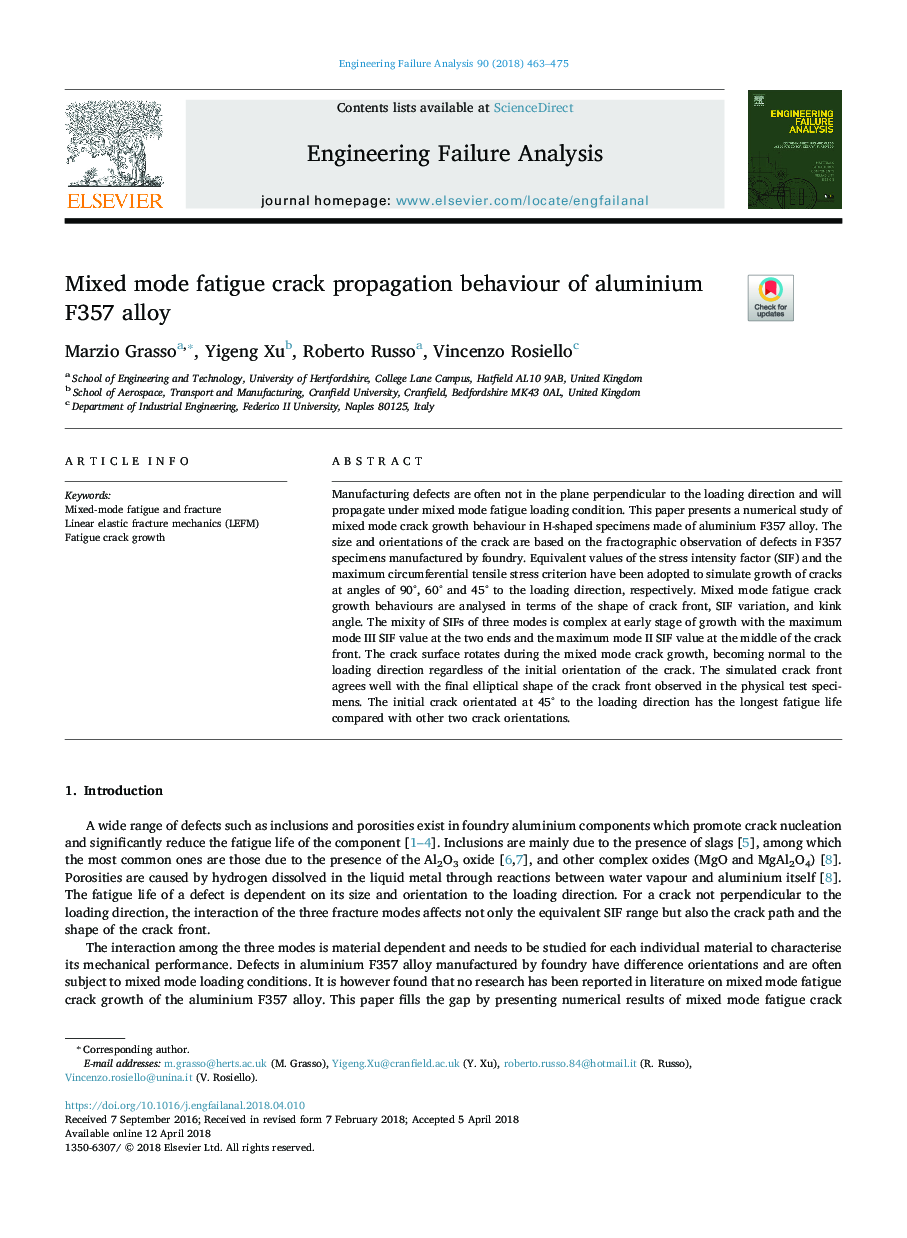| Article ID | Journal | Published Year | Pages | File Type |
|---|---|---|---|---|
| 7167397 | Engineering Failure Analysis | 2018 | 13 Pages |
Abstract
Manufacturing defects are often not in the plane perpendicular to the loading direction and will propagate under mixed mode fatigue loading condition. This paper presents a numerical study of mixed mode crack growth behaviour in H-shaped specimens made of aluminium F357 alloy. The size and orientations of the crack are based on the fractographic observation of defects in F357 specimens manufactured by foundry. Equivalent values of the stress intensity factor (SIF) and the maximum circumferential tensile stress criterion have been adopted to simulate growth of cracks at angles of 90°, 60° and 45° to the loading direction, respectively. Mixed mode fatigue crack growth behaviours are analysed in terms of the shape of crack front, SIF variation, and kink angle. The mixity of SIFs of three modes is complex at early stage of growth with the maximum mode III SIF value at the two ends and the maximum mode II SIF value at the middle of the crack front. The crack surface rotates during the mixed mode crack growth, becoming normal to the loading direction regardless of the initial orientation of the crack. The simulated crack front agrees well with the final elliptical shape of the crack front observed in the physical test specimens. The initial crack orientated at 45° to the loading direction has the longest fatigue life compared with other two crack orientations.
Related Topics
Physical Sciences and Engineering
Engineering
Industrial and Manufacturing Engineering
Authors
Marzio Grasso, Yigeng Xu, Roberto Russo, Vincenzo Rosiello,
